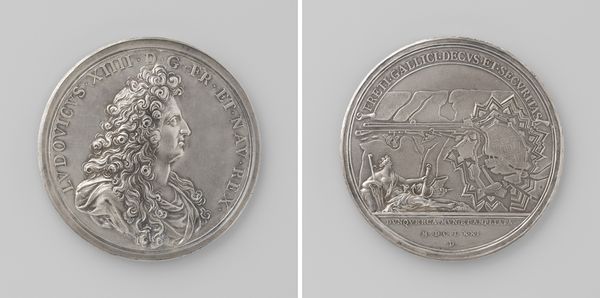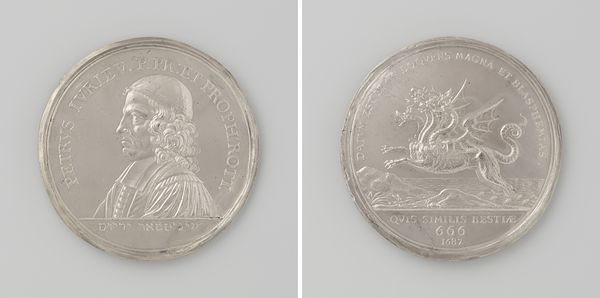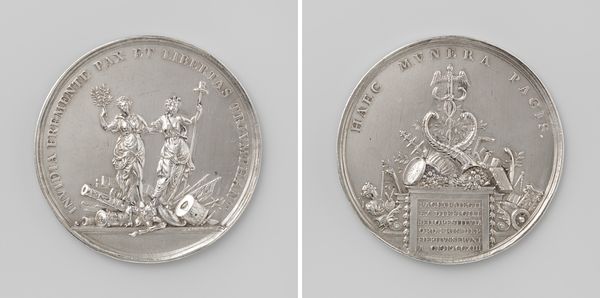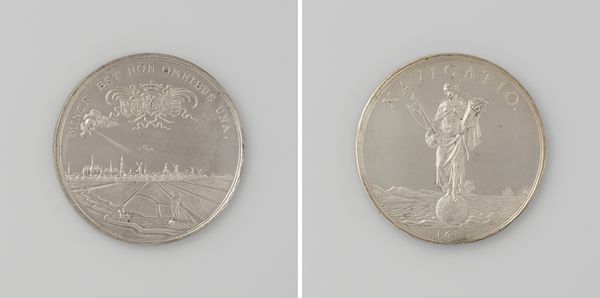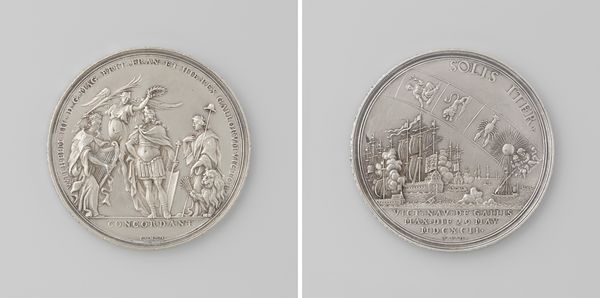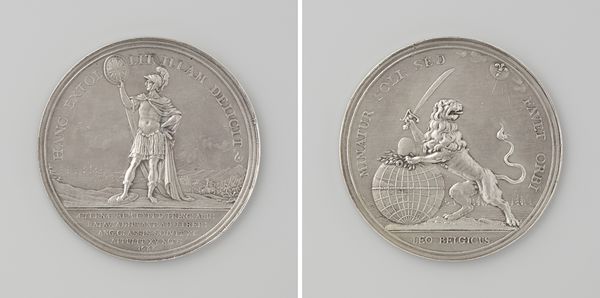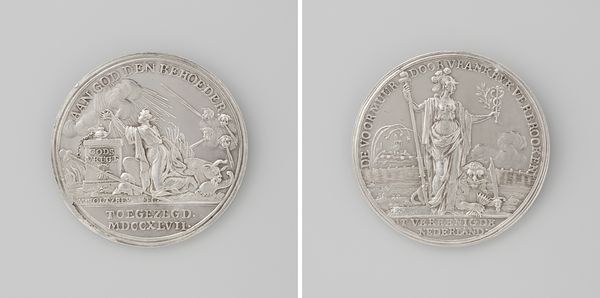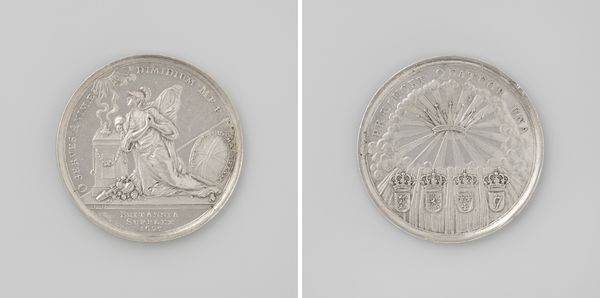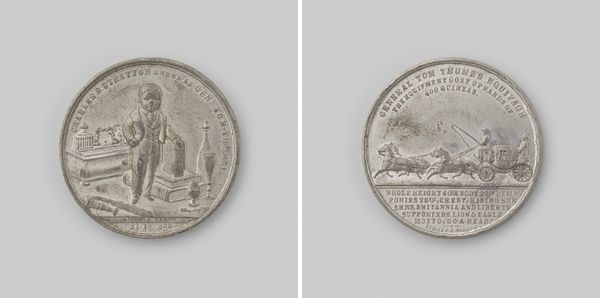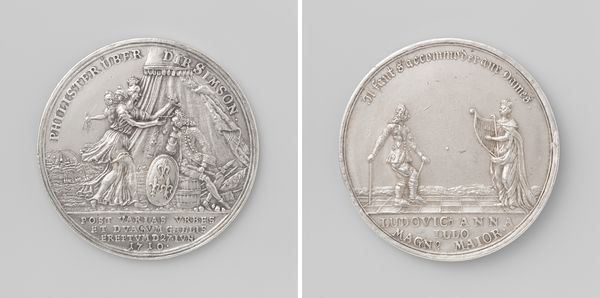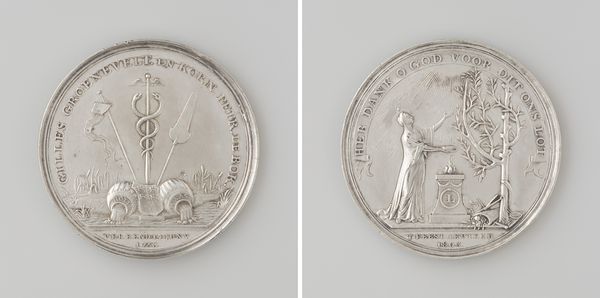
Hoogmoedig gedrag van Lodewijk XIV na het innemen van Luxemburg en het bombardement van Genua 1684
0:00
0:00
silver, metal, relief, sculpture
#
portrait
#
silver
#
baroque
#
metal
#
relief
#
sculpture
#
history-painting
Dimensions: diameter 6 cm, weight 60.56 gr
Copyright: Rijks Museum: Open Domain
Curator: This silver relief sculpture from 1684, titled "Hoogmoedig gedrag van Lodewijk XIV na het innemen van Luxemburg en het bombardement van Genua", depicts Louis XIV's pride following those military actions. It was crafted by Monogrammist IR. Editor: It strikes me as a carefully staged propaganda piece. The contrast between the glorification of Louis XIV on one side and the implied subjugation on the other is stark and unsettling. Curator: Absolutely. It embodies the baroque era's fascination with power and its performative nature. Louis is elevated, quite literally, above the conquered cities of Luxembourg and Genoa, holding a scepter topped with what seems to be the globe, signifying his dominance. We can see that it is very carefully crafted in metal, probably silver, the king as symbol of divine right on a round coin or medal of victory. Editor: And on the reverse, we have the hand emerging from behind the curtain holding a laurel branch. This image speaks volumes about victory, promise of peace. The contrast really underscores the manufactured image of benevolent power after what were, in fact, acts of extreme violence. This can be viewed through the lens of critical theory which highlights how power perpetuates itself. Curator: Considering the broader political landscape of the 17th century, this medal reflects not just Louis XIV's ambitions but also the deeply entrenched structures of inequality and colonial exploitation prevalent in Europe. The laurel symbolizes not merely peace, but perhaps the false peace that colonial power promises as a justification for exploitation. Editor: The symbolic language is crystal clear: a projection of invincibility, with potent use of classical and religious iconography to create the aura of justified authority, but in actuality just another exercise in power, dressed to make it palatable to his court. The king, always conscious of what to represent, to ensure his memory will last. Curator: The symbolism speaks of a deep anxiety concerning how power is perceived and remembered. It reminds me that representations of strength are often the most fragile and contested. I guess this piece offers a lens to deconstruct the construction of narratives of power and their resonance through the ages. Editor: Indeed, by revealing these ingrained messages, we understand a historical perspective and context for viewing contemporary expressions and systems of oppression, from past colonial endeavors, all the way up to modern forms.
Comments
No comments
Be the first to comment and join the conversation on the ultimate creative platform.
